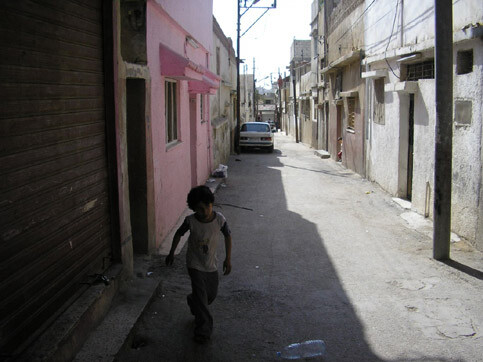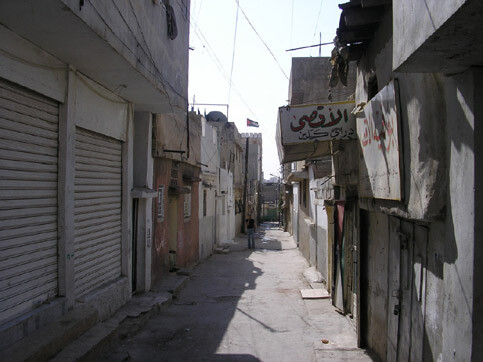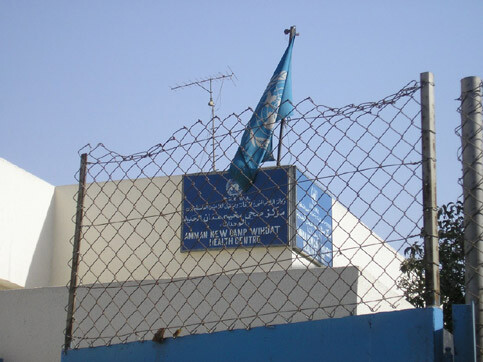The Electronic Intifada 28 October 2004

Jordan has the largest concentration of Palestinian refugees, with nearly two million in 13 camps. (Arjan El Fassed)
Wihdat, Jordan’s second largest Palestinian refugee camp is one of the four refugee camps established after 1948 in Jordan. The camp was set up in 1955 to host some 5,000 refugees on an area of 488,000 square meters south east of Amman.

Wihdat, or Amman New Camp, has become a suburb of east Amman. (Arjan El Fassed)
Palestinian refugees in Wihdat, or New Camp, were initially accomodated in 1,400 shelters. Over the years the refugees have added more rooms to improve their shelters and the camp has grown into an urban-like quarter surrounded by areas of high population density.

For Palestinian refugees living in Wihdat, it is difficult to find proper jobs with reasonable incomes. (Arjan El Fassed)
Currently, more than 50,000 registered refugees are living in Wihdat. UNRWA runs 20 schools for 11,720 students. Because of the lack of adequate premises and lack of funds to build new schools, these 20 schools operate on a double shift basis. UNRWA also operates two health centers for some 1,500 patients daily.

The United Nations Relief and Works Agency runs schools and health clinics that cater to the needs of the refugees. (Arjan El Fassed)
In Jordan ten official Palestinian refugee camps are located, hosting more than 300,000 registered refugees, or 17 percent of the 1.7 million Palestinian refugees registered with UNRWA in Jordan.

Jordan has imposed tough laws banning demonstrations after public sympathy with the Palestinian uprising produced the largest streets protests in more than a decade. (Arjan El Fassed)
In 1948, an estimated 100,000 refugees crossed the Jordan River and initially took shelter in temporary camps, in mosques and schools, or in towns and villages. International organizations, mainly the International Committee of the Red Cross, provided emergency assistance for the refugees until May 1950 when UNRWA started its operations. In 1967 following the Israeli occupation of the West Bank and Gaza Strip there was another influx of refugees into Jordan. Some 140,000 persons, already registered refugees with UNRWA, were part of the new expulsion together with about 240,000 citizens of the West Bank who are referred to as “displaced persons.”
Related Links